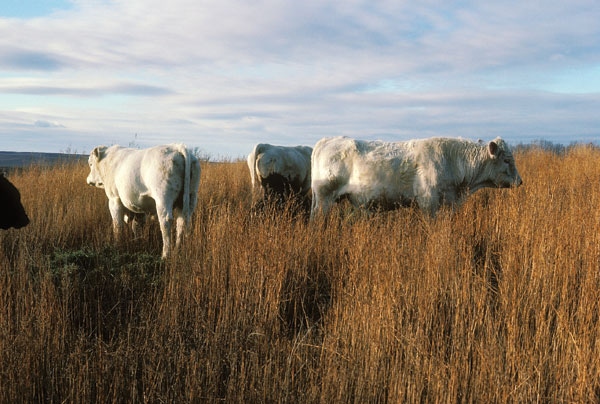What Constitutes A Good Bull?
December 9, 2011

Not surprisingly, bull prices – just like the rest of the industry’s pricing structure – are seeing a major increase . It wasn’t that many years ago that a $5,000 bull was considered to be a rare commodity. But, it appears that will be closer to an average bull than an elite bull this year. The higher prices and growing input prices aren’t only escalating the value of cattle but underscoring the growing differences in cattle’s value.
It isn’t difficult to quantify the value differences of, for example, 20 lbs. of yearling weight; if a bull has a 20- lb. advantage and sires 100 calves over his lifetime, and those pounds are worth $1.20/lb., then that bull is worth $2,400 more than the other bull.
Using these types of figures, it’s easy to build a case that bulls in the top 25% of a population for various traits, compared to average bulls, can easily be worth $5,000 or more. However, it’s rarely that simple ; not only do you have to consider pounds and growth, but also the composition of those pounds and the efficiency of that growth. You have to balance the variety of genetic antagonisms, such as birth weight and growth, yearling weight and mature size, ribeye area and marbling, etc.
So how does one identify the value of a bull, when you’re not only trying to assess his genetic values within your breeding program and environment, but also your own marketing program and goals? Plus, couple that with things like value that is created – or perceived to be created – with certain development programs and associated reputations.
Many producers have experiences with certain breeds, biological types and EPD profiles for which they have solid data that validates certain optimum ranges for a variety of traits. Nevertheless, there is no definitive tool that allows one to adjust for their management, their resources, their labor, their marketing program and the genetics in their cowherd, and then crank out a set of parameters that will maximize profits. The great irony is that while the averages have increase dramatically, the price spreads between bulls have tended to remain stable. More than ever, doing one’s homework and identifying the appropriate genetics are the keys to success.
The one thing that is certain is that not only has the size of the investment increased but its impact on your bottom line is increasing as well.
About the Author(s)
You May Also Like


.png?width=300&auto=webp&quality=80&disable=upscale)
